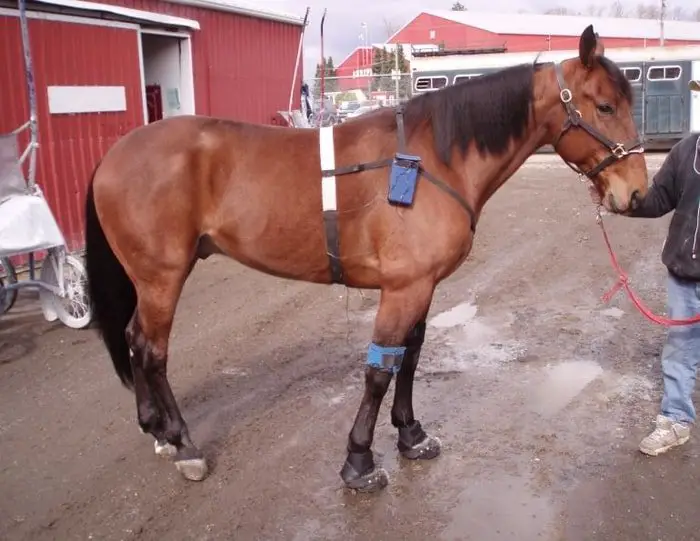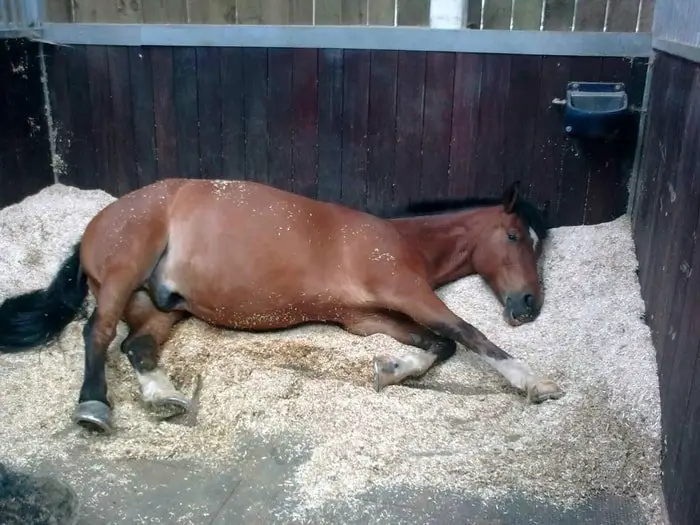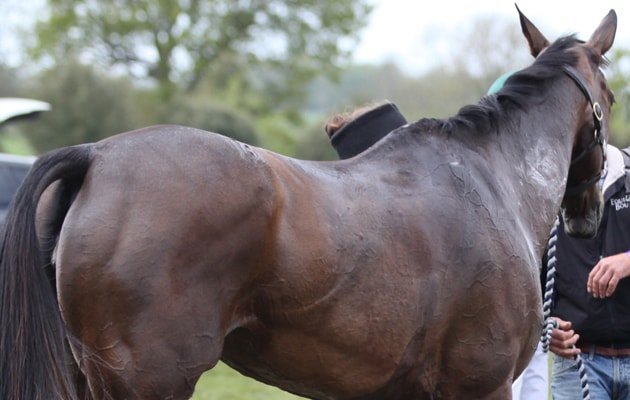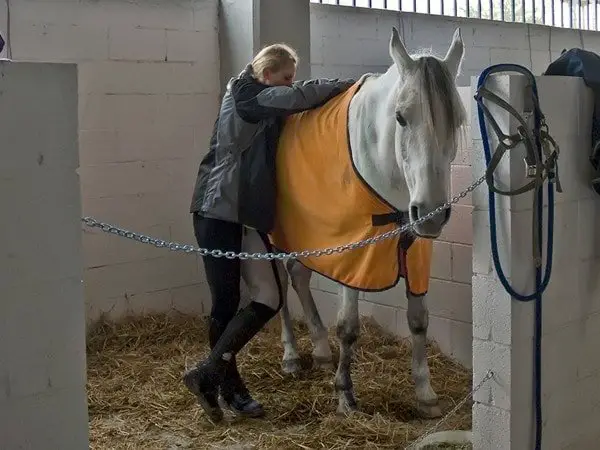Azoturia in horses, otherwise referred to as Exertional Rhabdomyolysis, Monday morning disease, tying up and paralytic myoglobinuria can be a severe, life-threatening condition. It is of particular importance in draught breeds but can occur in light breeds as well.
What causes Azoturia horses?
Classically the disease has been described in draught horses following Sunday’s day of rest, thus the name Monday morning disease. In the light breeds, exertional rhabdomyolysis occurs in fit horses that are in rigorous training programs that are rested for a while being maintained on the same high concentrate diet required while at work. The disease occurs once the horse returns to work. Sudden increases in exercise level may also be associated with this disease. Exertional myopathies may also be observed in horses that are inadequately fit for competition. Disease pathogenesis is poorly defined. A variety of factors that result in metabolic alterations of the muscle, mitochondrial function and electrolyte, and fluid balance are involved.

Clinical Signs of Azoturia in Horses
- Clinical Signs are variable. Typically the horse walks a stiff, stilted gait, severe cramping results in reluctance or inability to move.
- In extreme cases, animals are recumbent and unable to rise.
- Typically, muscles of the back and hindlimbs are tight and painful to palpation.
- These horses are often anxious, sweat profusely, and have elevated vital signs.
- Exacerbation of the condition may occur during attempts to move severely affected horses.
- Myoglobinuria occurs in severely affected animals.
- Creatinine phosphokinase (CPK) and aspartate aminotransferase (AST) levels rise markedly with Azoturia.

- CPK levels increase rapidly, peaking at 6 hr after muscle damage has occurred and returned to normal levels in 36-72 hr.
- Levels of AST rise more slowly, peaking at 24-48 hr and declining by 2-3 wk after the insult.
- The degree of elevation often reflects the extent of myonecrosis.
- Therefore, serial evaluation of both enzymes to monitor the progression of the disease and the rate of recovery is suggested.
How do you treat Azoturia in horses?
The treatment protocol of Azoturia in horses is as follows.
- Treatment of the severely affected horse involves preventing further muscle damage, correcting metabolic abnormalities and dehydration, and analgesia in animals that are in extreme pain and reluctant to move.
- In severe cases, even walking back to the barn is contraindicated. In those cases, transport to a stall should be arranged. In mild cases, with minimal muscle damage, hand-walking has proven to be beneficial. Experienced clinical judgment is necessary to ascertain which cases benefit from additional exercise.

- In cases of severe dehydration and electrolyte imbalance, a balanced polyionic electrolyte solution should be administered IV or through a nasogastric tube.
- Many endurance horses suffering from this disease will be alkalotic, and therefore bicarbonate therapy should be avoided.
- Myoglobin can be nephrotic, especially in the dehydrated animal. Myoglobin possesses vasoactive properties that in the dehydrated horse may encourage the development of renal ischemia and tubule damage. Serial monitoring of the PCV, TP serum electrolytes, and creatinine should be performed.
- NSAIDs, such as phenylbutazone, help relieve muscle pain and spasm. Acetylpromazine reduces anxiety and improves peripheral blood flow through the alpha-adrenergic blockade. In extremely anxious horses, small doses of xylazine butorphanol or detomidine may be indicated.

Care and Management of Monday Morning Disease
- Good nursing care is essential. A warm, comfortably bedded stall in an environment that encourages the horse to rest is essential.
- The horse should not be encouraged to stand if it wishes to remain recumbent.
- However, prolonged recumbency in one position can be detrimental, and frequent repositioning may be necessary.
- If the patient remains recumbent for an extended period, a padded helmet helps protect the head and eyes, and ocular lubricant and antibiotic ointments help prevent corneal ulcers.
- The distal limb should be bandaged to prevent self-trauma.
- Massage and warm blankets may also encourage muscle relaxation and blood flow.
- A variety of od hand-held electric, pulsating massagers is commercially available.
- By using light pressure, the massager is directed ina circular motion over the large muscle groups for 10-15 min two to four times daily.
- Severely affected horses with painful muscles may object to this technique.